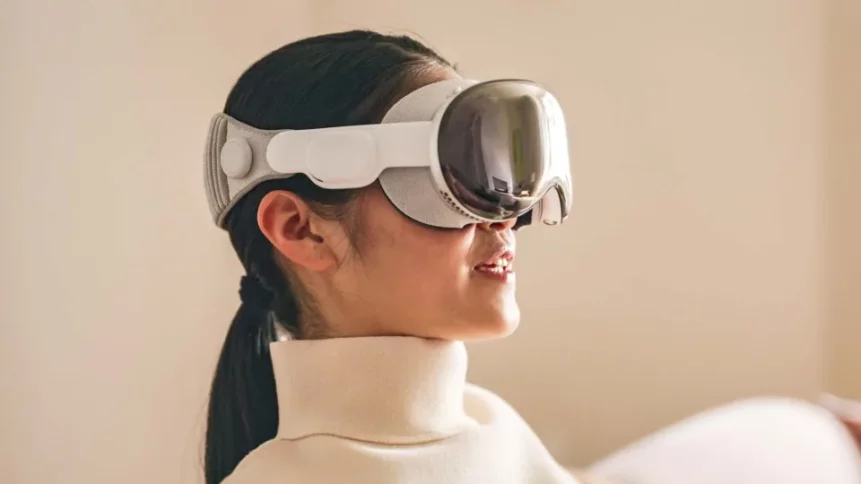Japan is a critical market for Vision Pro to conquer

|
Getting your Trinity Audio player ready...
|
• Apple VR headset to be released in 2024.
• Japan is a key market for VR and AR.
• South Korea making a big investment in the technology.
Apple has made an entrance into the virtual and augmented reality sector (VR and AR) with the announcement of its Vision Pro headset. Costing an eye-watering $3,499, the Apple VR headset will debut in the US in 2024 before reaching other countries later in the year.
For some, Apple’s decision to enter the VR market is odd: the technology isn’t mainstream, especially outside of gaming. Japan, South Korea, and China are among the most advanced markets for headset adoption, as areas where the technology sees a wider range of use across multiple sectors. By value, the top three markets are the US, China, and Japan.
Japan is also the world’s third-largest gaming market and a key area for Apple VR: the Vision Pro’s success in Japan is critical and will be closely watched. The technology is already applied across industries in Asia.
For example, in an effort to combat absenteeism in Japan, schools are harnessing VR to encourage students – especially those who live far away – to attend.
In South Korea, the Pohang Universityof Science and Technology aims to become a “metaversity” based on digitalized training (we’ll be more convinced that VR learning has taken off when it’s adopted by the humanities, too).
Testament to the importance of the Asian market, half of Apple’s six Vision Pro developer labs will be in Singapore, Tokyo and Shanghai.
Sam Byford, a Tokyo-based writer for Multicore, said Apple’s large fanbase in Japan spans decades, but the weakened yen might hamper the Vision Pro’s appeal. If the downward trend continues, Japanese consumers will pay significantly more for the headset.
“The price is going to be even more of a tough sell for Japanese people than people in other countries — $3,500 works out at around ¥500,000 right now,” Byford said.
Harmeet Singhwalia, senior analyst at Counterpoint, said that regardless of the price, the Vision Pro demo — which emphasized business and cinematic applications — offers a new mainstream vision for how augmented and virtual reality will be used.
“It’s not just about gaming or content but a much broader use case. Longer term, this is the next personal computing device, and it’s already generating excitement for the segment as a whole,” he said.
Apple’s development of AR and VR might be indicative that the technology is about to blow up. According to Byford, Apple typically does not attempt new technology. Instead, he says, “they tend to kind of look at how the market shakes out and then offer their own spin on it.”
“I think they’ve been looking at the VR market, the AR market and waiting and iterating and deciding when to enter it. Ultimately, they see that this technology is not going away.”
YOU MIGHT LIKE

Metaverse is causing Meta to bleed billions
Apple’s Vision Pro, which looks a bit like ski goggles, incorporates features of AR and VR. The user controls apps using hand gestures and eye movements and can use the device to watch movies and make phone calls.
There’s some speculation that the headset could be as transformative as the iPhone was. Unlike that release, Apple VR is entering a market of competitors who are already established in the sector.
So far, Meta has dominated global VR markets, with Sony making inroads with hardware. In China, ByteDance acquired Pico as an entry point into producing VR devices and seeks to put its own stamp on the market.

Apple VR integrates with physical surroundings.
Apple’s emergence will certainly amp up the competition.
Virtual reality’s success in Asia
Part of the reason that VR has been more successful in Asia is that its uptake is driven by government initiatives that support the industry with investments in training, development, and production.
Put on the glasses – it’ll change your life…
In November 2022, China’s Ministry of Industry and Information Technology released a VR action plan, aiming for the sale of more than 25 million devices, with the industry value exceeding 350 billion yuan ($48.2 billion) by 2026.
VR was included as a “key industry” in China’s 14th Five-Year Plan, which called for local governments to encourage industry growth.
A $5 million AR studio launched in Singapore last year, concurrently with Japan emphasizing the importance of the metaverse. Prime Minister Fumio Kishida promoted this as part of his efforts to expand services, known as Web3, underpinned by blockchain technology.
South Korea’s science ministry plans to invest 223.7 billion won ($166 million) in order to develop a metaverse ecosystem, with training a focal point of the strategy, and will support the development and commercialization of VR and AR technology.
Analysts project economic gains from AR and VR uptake: Japan is expected to see a 2.00% rise in its gross domestic product by 2030, while China is forecast a GDP boost of 2.09%.










